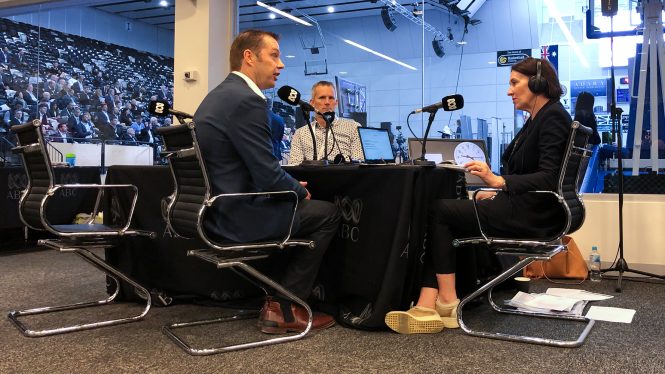
From the days of notched sticks and cave paintings, communications have had three parts – the sender, the medium and the recipient.
So it is with modern communications, whether legacy publishing and broadcasting or new media and social media.
Journalism has long focused on the first two parts – how to get the news from “us” to “them”. It has also tried to gain an understanding of the third part, the recipients, though mechanisms such as Letters to the Editor, talkback radio, vox pops, chats and comments. Sometimes this is done to promote feelings of loyalty in their audiences or to gather feedback for improving content.
And occasionally journalists remember that communication is also a two-way process, with their community the senders, the medium the carrier and the journalists themselves the recipients.
At such times, we recognise that our communities have as much to tell us as we have to tell them.
Nowhere is this more important than when we zero in from the overall communications of our medium to a core component at the heart of journalistic communications – the interview.
From the very first time a cadet journalist is given a real assignment, interviewing is the very core of how they put together news stories. We might start the news gathering process from a tip-off, an event, a speech or a media release. And we may gather background from our files or online research. What turns all that information into living, breathing news is the information we gather ourselves from talking to the people involved.
At this point we should remind ourselves that news is essentially a conversation. Sometimes it’s between ourselves and our audiences. Sometimes it’s between ourselves and the people from whom we are seeking information and comments, facts and opinions.
And like all good conversations, interviewing is a two-way process – speaking and listening. Journalists ask questions and our interviewees answer them – to varying degrees. But we fool ourselves if we think this to-and-from is the only two-way communication going on.
What is also happening in an interview is that the interviewee is both the recipient (of our questions) and also the sender (of their answers). So are we, the journalist, both the sender of the questions and the recipient of the answer.
We have the responsibility to both frame the right questions well and to listen carefully to the answers, not just to confirm things we already know but to discover more, to dig deeper into the topic itself and better understand the person who is sending their information, comments and opinions to us.
One of Australia’s most thoughtful interviewers, Virginia Trioli, captured this process when speaking to the Sydney Morning Herald about her new season of Creative Types with Virginia Trioli on ABC Television.
“[It] becomes a conversation that’s based on listening,” she says. “I think that’s always been the skill set I’ve worked hardest on, for all of my career, just to try and master the art of listening … I’ve really had to learn that.”
She consciously studied interviewers she admired, like Laurie Oates, Ellen Fanning and Jana Wendt, paying attention to what they were doing.
“I realised that they were listening – very, very carefully. And sometimes their best question was something like, ‘How so?’ or, ‘What do you mean?’”
The whole article in the Sydney Morning Herald is well-worth reading for any journalist who wants to perfect their interviewing skills. For a more nuts-and-bolts overview, large parts of The News Manual are devoted to interviewing and there are two chapters dedicated to Interviewing Basics and Telephone Interviews.
We also touch on interviewing in the chapter on New media and social media for journalists, with some different slants on the topic and some advice on how to integrate interviews as creators, together with the pitfalls to avoid.
One of the biggest mistakes many creators make – especially those who are non-journalists or practitioners transitioning to new media and social media – is a failure to recognise the importance of communications as a two-way process.
Many people who launch websites or write blogs make them one-way processes, a means of saying only what they think – or what other people should think – without listening to anyone else, either people involved in the topic under discussion or visitors to their websites, blogs and social media feeds.
The so-called democratisating effect of social media has destroyed the barriers between trained, professional journalists and people with something they want to say, without replacing the traditional balances that have made media so valuable to civil society.
New and social media creators and influencers often live in “information bubbles”, trapped within their own worldview and cut off from alternatives viewpoints that constitute the real world.
Learning to seek other opinions and listen to diverse views would make their sites, blogs and feeds richer and more valuable to humanity, their contribution greater than more noise.
Sometimes, as great interviewers demonstrate, silence really is golden.
